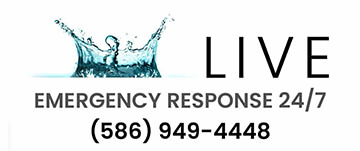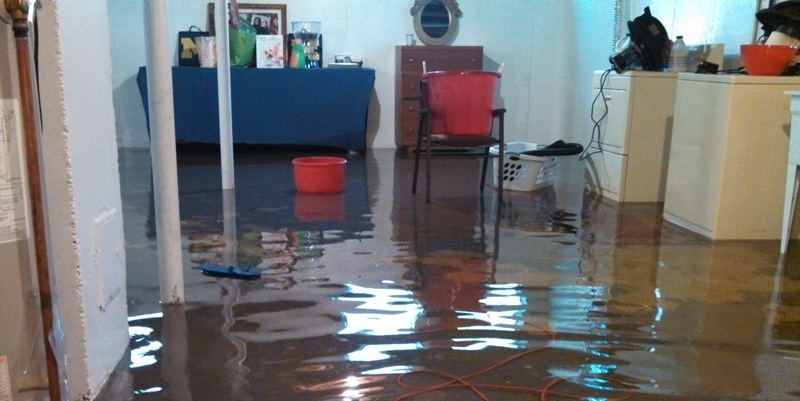What To Do When Basement Floods
What To Do When Basement Floods
Flooded basements are the last thing on a homeowner’s mind. Between making sure the kids are off to school and all the bills are paid, worrying about your basement is not a top priority. That means that when a flood issue does occur, many homeowners are put into a critical position. What to do when your basement floods? In this blog we will talk about the steps and calls you need to make as soon as you find a flooded basement that will make sure your home is protected from water damage no matter the cause.
Call The Right Team
The very first thing you should do when your basement floods is call the team at Action Extraction. The water technicians at Action Extraction have each handled over 1,000 floods individually, and your water loss problem will be no problem at all. When you call Action Extraction, you are calling a business with over 40 years combined experience in water damage restoration, certified in all structural drying and mold remediation.
Why is calling Action Extraction important? Water is a destructive force regardless of its form. Raging rivers carve out canyons through landscapers. It is suggested that a glacier moved through what is now desert, carving out the Grand Canyon. While we do not expect raging rivers and gigantic glaciers to be found within your home, standing water can be just as devastating.
Water in your home, if left untreated, is a breeding ground for nefarious microbes and bacteria to thrive in. Saturated building materials push moisture into the air, raising the relative humidity and the dew point, the point at which material will condensate. When critical mass is reached, around 65 percent, walls and ceilings will begin to soak with moisture pulled directly from the air.
Incipient (just beginning to exist) mold will form around 48 hours of the introduction of water to a food source. While some factors, such as sunlight and air flow, may extend the time before mold is present, after 48 hours any certified water restoration company must assume the presence of incipient mold. To avoid having a costly mold mitigation project on your hands, it is important to have a qualified and knowledgeable team working with you to monitor the health of your home.
Call Your Insurance
So, you have called Action Extraction and our van is backing into your driveway, now what? Now is the time to call your insurance company and make an insurance claim for water damage. Not all basement water backups will be covered under your homeowner’s insurance so it is important to have your insurance papers ready for our team to review with you when we arrive. We are specialist at getting the cost of cleaning up a flooded basement when insurance coverage exist. Let us go through some of the potential insurance loss coverage plans.
Almost all water that passes through a municipal line and into your home will be covered automatically under your home’s insurance policy. That means that water spewing from a hot water tank, clothes washer, copper supply line or any other freshwater leak will be covered, 100 percent. Even a toilet or tub overflow related to human error, as in forgetting the water was running, is covered.
Water that enters your home through a storm drain, sump well, or sewer line is considered a water backup. These claims almost always require a special addendum to your policy, in the form of back up of sewer and storm coverage. This style of coverage is typically capped, and policy caps can range from as little as 2,500 dollars to as much as 25,000 dollars. Unfortunately for many of the homeowner’s we speak to every day, they do not realize that they are under covered until it is far too late. Call your agent today to make sure your home is covered adequately in the event that you experience a water back up.
Never Enter A Flooded Basement.
Now that you have called Action Extraction and the flood team has arrived, and we have taken the time to confirm coverage, it is now time to access your flooded basement. You should never enter a flooded basement unless you know a few things for sure.
First, you need to be sure that your flooded basement has not reached a high enough level to make a connection with any power sources. Water levels above 12 inches must be tested for an electrical current before being waded into. Every year, dozens of emergency service workers are harmed walking into waters that were not properly accessed as safe to enter.
After making sure your flooded basement is not electrically charged, it is important to access which category of water you are dealing with. There are 3 categories of water loss, one, two and three. Category 1 water losses are freshwater losses, clean water coming from municipal lines are common sources for category 1 water losses. Category 2 water losses are caused by ground water and lightly dirtied fresh water. Category 2 water is safe to enter though not safe to ingest. Category 3 water is essentially sewage water. If your basement experiences flooding from a sewage backup there will be specialized protective equipment you and your water crew will need to wear before entering your basement.
Making sure your upstairs flooring is covered and protected is another reason you should never enter a flooded basement until you are prepared. Covering carpet or wood floor coverings with a burlap runner or plastic will help to make sure you do not endure additional hardships unrelated to your flooded basement.
Access Damaged Personal Items
Once your team has deemed your basement to be safe to enter, it is now time to access the damage. We will talk about what your flood team will be doing in a moment but let us talk about what you can do to help your team and move the process along in regards to your in home items.
Any cardboard or paper items that are inundated with water must be thrown away. Cardboard and paper often lose their integrity when water is introduced to them, as well as being mold’s favorite food source. Clothing can typically be washed depending on the water’s category. Category 3 water will almost always result in any absorbent items being discarded. Pictures can be dried and either reprinted or laminated.
While you are accessing your personal items, your flood team will be accessing your basement. Any saturated building materials must be addressed and exposed to rapid air movement which is important for structural drying.
This means removing base moldings from wet drywall or wood paneling, removing wainscoting from walls and, at times, casing from doors. All drywall will need to be checked for insulation, and if that insulation is saturated, the walls may need to be removed about 1 foot off the ground.
Floor coverings such as wet carpets may be safely dried and salvageable however their under-lament padding is typically not. Category 1 water losses are the only category in which carpet padding may be saved and many times even then it will be removed to accelerate the homes overall dry out.
Wooden floors like hardwood and laminate floating flooring will need to be individually accessed to evaluate the scope of damage. Hardwood flooring saturated with category 1 and 2 water may be dried in place using heat and specialty equipment.
Engineered flooring will not be salvageable unless there are no noticeable marks or swelling in the floor face. Laminate wood flooring must always be removed regardless of category. Laminate floor creates an impervious barrier, trapping moisture and often times swelling at its connecting joints.
How To Dry A Wet Basement
Once floor coverings have been accessed, walls have been treated, and personal items have been evaluated it is time to begin the drying process. Standing water will have already been removed through water extraction at this point in time. Any additional puddling must be removed before setting equipment up in your home.
High powered air movers are the first to be placed. Each fan will be placed in a strategic spot in your home with the goal of rapidly pushing air around your basement. While it may seem easy to place fans around your basement to dry things out, Action Extraction uses tried and true methods of drying sure to dry your home fast. As air passes over your wet building materials it gathers up as much moisture as it can until it is fully saturated. Once that happens, it will arrive at one of our strategically placed dehumidifiers.
Each dehumidifier in your home will be placed in a way as to gather up saturated air and return it to the mini tornado in your basement as dry air. Through the use of frozen coils, these dehumidifiers act as a kidney to your home, removing unwanted moisture and getting it ready to be discharged. After 3 days of this process playing out hundreds of times an hour, your basement is sure to be dry and ready for repair.
Action Extraction – The Answer to What to do When Basement FloodsNow you know what to do when your basement floods. Remember, your first call should always be to Action Extraction. Flooded basements should never be entered until they are shown to be safe, and your actions thereafter will be influenced primarily by the category of water present. Regardless of the cause or category of your water loss, Action Extraction is here to help!




